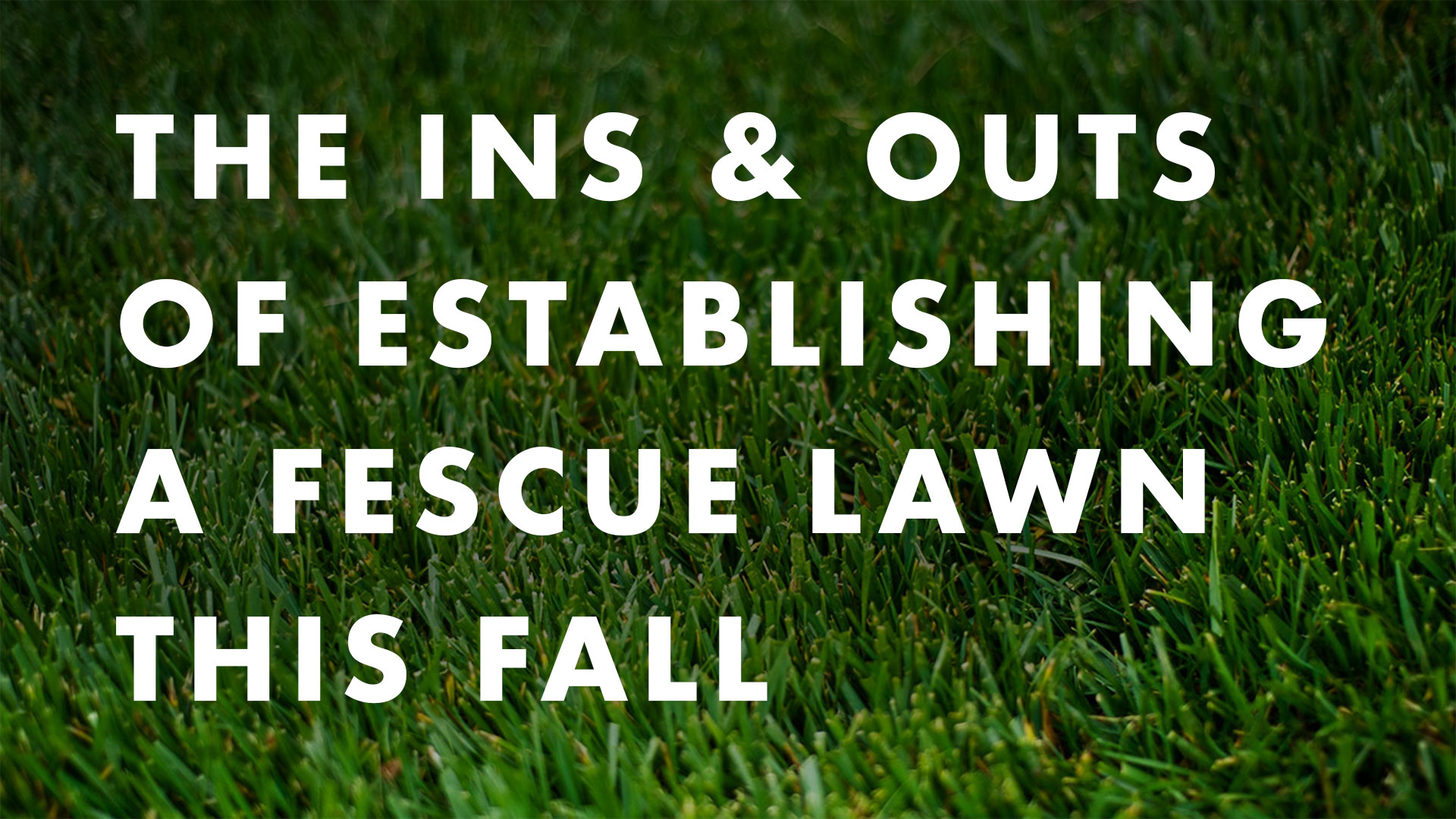
11 Jul The Ins and Outs of Establishing A Fescue Lawn This Fall
I like to harp on the fact that no two lawns are the same, and what might work for you, might not work for the guy across town or your neighbor for that matter.
That said, for a great many people a fescue lawn makes a lot of sense. Especially if you are in the Transition Zone like we are here in the Triangle of North Carolina.
Fescue grass is a cool season grass that is one of the most popular grass types in the good ole USA, but how do you know if it is the right turf grass variety for your lawn?
It is going to take a little thought and investigation–or maybe a little help from a lawn care professional–to figure out for sure, but if you live in an area with moderately cold winters, warm summers, and need a lawn that can handle some traffic, a fescue lawn might just be right for you.
When Is The Right Time to Renovate Your Lawn?
Unless you moved into a brand new build with a fresh patch of dirt surrounding your home, you probably have something resembling a lawn out there. Deciding the right time to cut bait with your current lawn and get a fresh start is a bit of a personal choice.
Really the answer is whenever it makes sense for your wants and needs, but a general rule of thumb is when your lawn is more that 50 percent weeds or Bermuda grass, it is time to kill everything and start over fresh.
In general, the fall is the best time to establish new fescue and other cool season grasses. The fall weather gives the grass the time it needs to build a solid root system without the pressure of the high temperatures found in the spring and summer.
Seed vs. Sod
When establishing a new fescue lawn, you have two basic options: growing your new lawn from grass seed or transplanting sod onto your lawn.
There is no right answer. Both are great options for creating a beautiful new fescue lawn, but they each have their own advantages and disadvantages that I will get into below.
Pros and Cons of Seed
Probably the most obvious benefit of planting seed to grow your fescue lawn is the lower cost compared to installing sod. Fescue grass seed can be found at just about every big box store and your local lawn and garden shops often will have seed that is blended specifically to perform best in your area.
Time is a limiting factor for seed. It takes time for you little baby seeds to grow, establish roots and become the thick full lawn of your dreams.
With that time, however, you can nurture a beautiful lawn that you can be proud of, and whether you are on a budget or just like saving some money where you can, seed can be a great option for establishing a new fescue lawn.
Pros and Cons of Sod
The beauty of installing fescue sod is that it is basically magic. Need to go from dirt to grass in a tomorrow? Boom, sod is the answer, and that ability to quickly have a full and beautiful lawn in no time is by far the biggest advantage to going with sod. Additionally, sod is great for locations on your lawn that may be difficult for seed to take hold. Slopes or areas that are erosion prone may be prime candidates for sod that won’t suffer the consequences of heavy water flow.
An increase in the total cost of your lawn goes hand in hand with the convenience of that speed. Whether you really call this a con is up to you. To me, it is just a limiting factor. Your budget is personal and what is right for you may not be for me or anyone else.
The Key to Success
Whether you decided to go with seed or sod, the key to the success of both is going to be the preparation of your soil before any seed or sod is placed.
Now is the the time to fix any grading issues, address the quality of the soil, amending your soil with certified compost, raking the surface smooth and spreading fertilizer. I go into more detail on preparing your soil in my post on How To Install Sod: A Step By Step Guide.
Making the effort to make sure your soil is where it needs to be to help your future lawn succeed, is going to help your new lawn thrive, last and save you money in the long run. The last thing you want to do is have to start over again because your new lawn is struggling due to poor soil.
Potential Issues With Choosing A Fescue Lawn
Fescue lawns are not without their foibles. Below are a few issues that can come up with your fescue lawn. Nothing insurmountable, but important to keep in mind when deciding if Fescue is right for you.
Too Hot or Too Dry: Too much heat or not enough water can put a lot of stress on your fescue lawn and cause it to go dormant or die.
Shade and Competition: Parts of your lawn that are shaded by a tree or other plants are forced to compete for light and nutrients. With this competition comes the potential for ill-fated grass.
Fungus and Other Pests: Fescue lawns are susceptible to fungus. We discussed one such fungal disease, Brown Patch, in our previous post. Issues can arise from birds scratching in their search of insects, but overall most insects in our lawns are harmless and in some cases helpful. Grubs can cause issues in your lawn, demonstrated by the gradual thinning and dying of patches.
What We Learned
My hope for you is that you learned that choosing the right kind of grass for your lawn is a personal decision based on the circumstances of your property.
If you are installing a fescue lawn this fall, I hope you will take the time to understand what your property needs to help your new lawn succeed and be an investment that you can enjoy for years to come.


Sorry, the comment form is closed at this time.